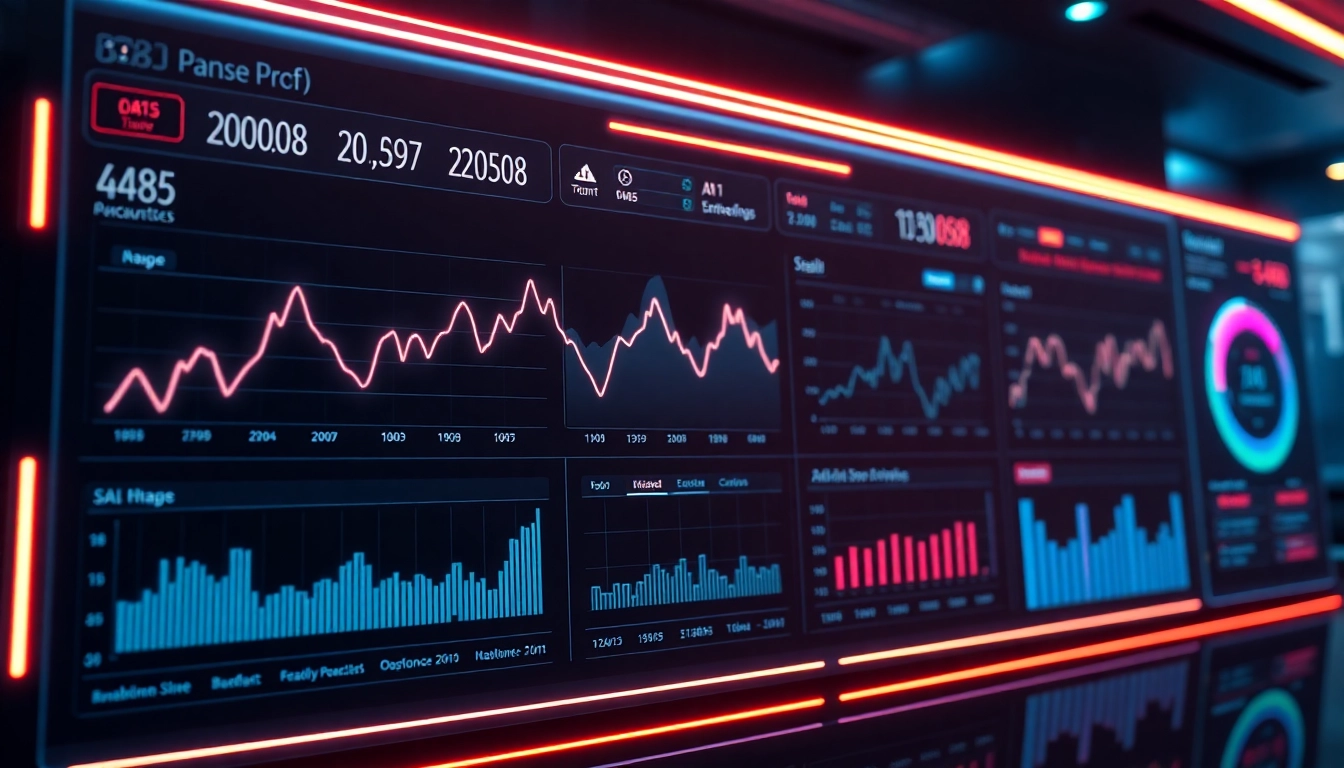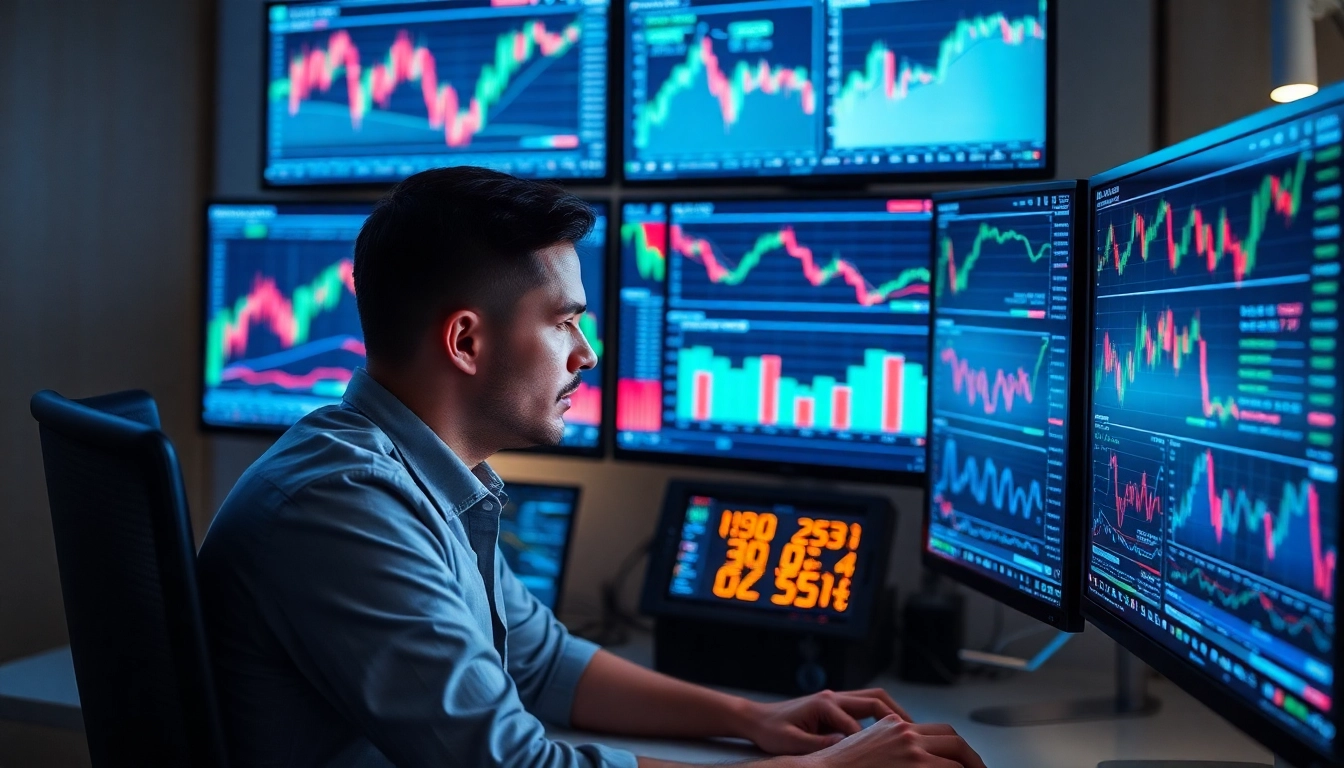Understanding the Dynamics of Metaverse Investment News in Today’s Financial Ecosystem
The rapid evolution of the digital economy has thrust the concept of the metaverse into mainstream financial discussions, creating new avenues and challenges for investors. As the world witnesses a mixed stock market landscape, record-breaking gold prices, and shifting currency and commodity trends, the metaverse stands out as a transformative frontier. For traders and investors eager to capitalize on this digital shift, staying updated with the latest Metaverse Investment News is crucial. This article delves into the intricacies of metaverse investments, exploring technological foundations, opportunities, risks, regulatory factors, and practical strategies for engaging with this burgeoning sector.
Analyzing Opportunities in the Metaverse Investment Landscape
High-Growth Sectors Within the Metaverse Ecosystem
The metaverse is not a monolithic entity but a sprawling ecosystem composed of several high-growth sectors. Among the most promising are virtual real estate, where investors purchase digital land within platforms like Decentraland and The Sandbox, anticipating appreciation as user engagement increases. Gaming remains dominant, with immersive environments attracting millions, driving revenues for platform creators and developers. Additionally, virtual goods and avatars, powered by NFTs, provide personalized, tradable assets that fuel secondary markets.
Specialized segments like metaverse-based social platforms and education environments are also gaining traction, creating new monetization streams. For instance, brands are establishing virtual showrooms, event spaces, and retail outlets—indicating a shift toward integrating commerce directly into immersive worlds. Recognizing these sectors enables investors to anticipate emerging trends and allocate resources strategically.
Identifying Promising Metaverse Startups and Platforms
Emerging startups such as Somnium Space and Cryptovoxels are innovating in user-centric virtual environments, offering unique features like interoperable assets and social collaboration tools. Larger established companies like Meta Platforms (formerly Facebook) are investing heavily in hardware and software to scale metaverse experiences. Identifying outperformers involves analyzing platform adoption rates, technical scalability, user engagement metrics, and the robustness of their blockchain integrations.
Investors should monitor funding rounds, partnership announcements, and user growth data. Participating in early private sales or token offerings of promising platforms can offer substantial upside, but due diligence is essential to evaluate project viability and security measures.
Risk Management Strategies and Due Diligence Tips
The volatile, nascent nature of metaverse investments necessitates meticulous risk management. Investors should diversify across multiple platforms and asset types, avoiding overconcentration in any single virtual environment. Conducting thorough due diligence involves evaluating the project’s technological roadmap, team credibility, community strength, and legal compliance.
Implementing stop-loss orders, setting realistic profit targets, and continuously monitoring platform updates are practical steps to safeguard investments. Moreover, understanding the regulatory environment—especially related to virtual property rights and token classifications—is critical to avoid legal complications.
Technological Foundations and Infrastructure
The Role of Blockchain and Cryptocurrencies in the Metaverse
Blockchain technology underpins the metaverse ecosystem by enabling secure ownership, transferability, and provenance of digital assets via NFTs. Cryptocurrencies serve as the primary mediums of exchange within these virtual worlds, incentivizing participation and facilitating cross-platform interoperability. For example, platforms like Decentraland utilize native tokens (MANA) to buy land, wearables, and other digital goods, establishing a decentralized economy.
Advancements in blockchain scalability, such as Layer 2 solutions, are enhancing transaction speed and reducing costs—key factors for large-scale adoption. As the infrastructure matures, liquidity pools, decentralized exchanges, and automated market makers (AMMs) within the metaverse ecosystem will further streamline asset exchanges, creating more dynamic investment opportunities.
Virtual Reality and Augmented Reality Advancements for Investors
The immersive experience promised by VR and AR technologies is critical for user engagement and platform growth. Companies developing high-fidelity headsets (like Oculus Quest and HTC Vive) are expanding accessibility, boosting user retention, and attracting more mainstream consumers. For investors, understanding these technological trends allows for better timing when evaluating platform maturity and potential market dominance.
Emerging innovations like haptic feedback suits and spatial audio enhance immersion, which could increase monetization through virtual events, concerts, and training simulations, offering diverse revenue streams for early investors.
Data Security and Privacy Concerns in Metaverse Projects
As virtual worlds accumulate vast amounts of personal and transactional data, security and privacy are paramount. Incidents of hacking, data breaches, and unauthorized data usage threaten user trust and platform longevity. Investing in projects with transparent security protocols, rigorous auditing processes, and compliance with data regulations (e.g., GDPR) mitigates risks.
Developers should prioritize end-to-end encryption, decentralized identity solutions, and user-controlled data options to build resilient systems that attract and retain user trust over the long term.
Regulatory Environment and Market Challenges
Legal Considerations Impacting Metaverse Investments
The legal landscape for metaverse investments is still evolving, with issues surrounding intellectual property rights, land ownership, and digital asset classification. Clarifying whether NFTs are securities, commodities, or property impacts taxation and regulatory oversight. Investors must stay informed about legislative developments across jurisdictions to ensure compliance and avoid potential fines or asset freezes.
Government Policies and Legislative Risks
Global governments are exploring frameworks to regulate virtual economies. Some nations aim to impose capital gains taxes on digital assets, while others consider bans on certain cryptocurrencies or virtual transactions. Changes in policy can significantly affect platform valuations and user participation. Active engagement with professional legal advice and monitoring legislative proposals are vital to adapt strategies accordingly.
Market Volatility and Future Outlook for Metaverse Assets
The metaverse sector is subject to considerable price swings driven by technological breakthroughs, investor sentiment, and macroeconomic factors like interest rate fluctuations. While short-term volatility is high, long-term growth prospects remain promising as enterprises and consumers increasingly embrace immersive digital experiences. Analyzing market indicators, transaction volumes, and platform adoption rates provides insights into potential trajectories.
Practical Steps for Engaging with Metaverse Investment News
How to Get Started with Metaverse Investment News Analysis
Begin by establishing a reliable information source—platforms that offer comprehensive updates on platform developments, token metrics, and regulatory shifts. Subscribing to industry newsletters, joining dedicated forums, and following thought leaders can provide early signals of opportunities and risks.
Utilize data analytics tools that track token prices, social media engagement, and transaction volumes, gaining quantitative insights to inform decision-making.
Tools and Platforms for Tracking Market Movements
- CoinGecko and CoinMarketCap for cryptocurrency prices and trends
- Deep liquidity and trading volume trackers for virtual assets
- Platform-specific dashboards to monitor user engagement (e.g., Decentraland metrics)
- Social listening tools to gauge community sentiment and influencer activity
Integrating these tools into a structured investment research workflow enhances accuracy and responsiveness.
Case Studies of Successful Metaverse Investment Strategies
One notable example is early investors in The Sandbox platform who capitalized on its strategic partnerships with major brands, resulting in significant appreciation of virtual land assets. Conversely, some early NFT projects failed due to lack of community engagement and security flaws, underscoring the importance of due diligence.
Implementing a systematic approach—combining fundamental research, technical analysis, and risk-controls—can emulate these successes and avoid pitfalls.







